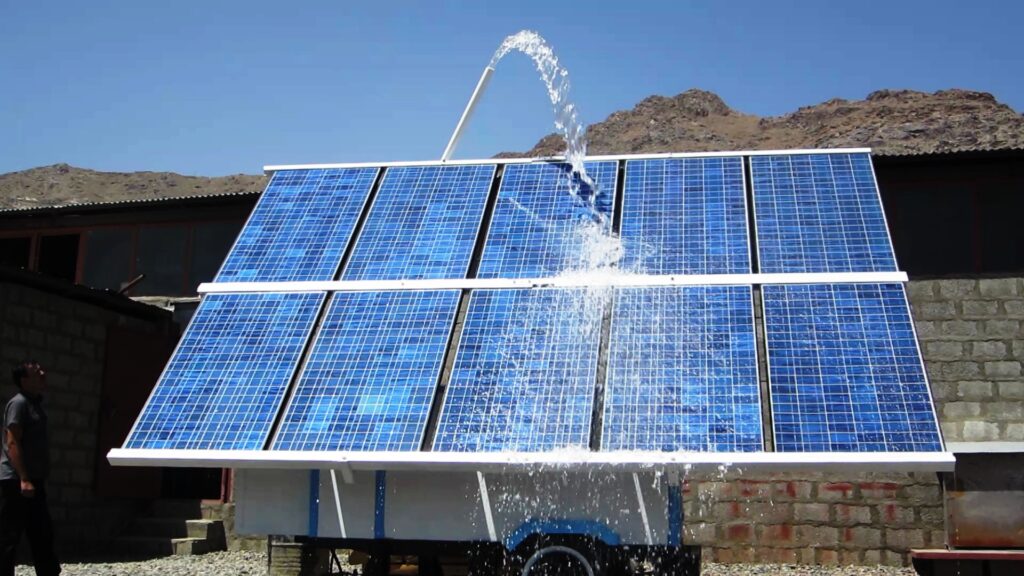Solar water pumps are designed to pump water using energy harnessed from solar panels. The parameters of a solar water pump vary depending on the specific system and its intended application. Here are some key parameters to consider:
- Pump Flow Rate (Q): This parameter indicates the volume of water the pump can move per unit of time, usually measured in liters per minute (LPM) or gallons per minute (GPM). The flow rate determines how quickly water is pumped from the source to the destination.
- Total Dynamic Head (TDH): TDH represents the total resistance or pressure that the pump must overcome to move water from the source to the destination. It includes factors such as vertical lift, pipe friction, and any other restrictions in the system. TDH is usually measured in meters or feet.
- Pump Power (W): The power required to operate the pump is a critical parameter. It’s influenced by both the flow rate and the TDH. A higher flow rate or greater TDH will require more power from the solar panels to operate the pump.
- Solar Panel Capacity (Wp): The solar panel capacity indicates the total wattage of the solar panels used to power the pump. It’s important to ensure that the panel capacity is sufficient to provide the required power for the pump, even under varying sunlight conditions.
- Voltage and Current (V, A): Solar water pumps can operate at various voltages and currents, depending on the system design. Make sure the pump and solar panels are compatible in terms of voltage and current requirements.
- Pump Type: Solar water pumps can be either submersible or surface pumps. Submersible pumps are placed underwater in the water source, while surface pumps are situated above the water source.
- Pump Efficiency: Pump efficiency indicates how effectively the pump converts the input power into hydraulic power to move water. Higher efficiency pumps will use less energy and provide better performance.
- Operating Voltage Range: Solar panels generate different voltages based on sunlight intensity. The pump system should be designed to operate within the range of voltages that the solar panels produce.
- Storage and Backup: Some solar water pump systems incorporate battery storage to provide water during periods of low sunlight. The storage capacity and backup duration are important considerations.
- Control and Monitoring: Modern solar water pump systems often include control and monitoring features. These can include variable speed control, automated start/stop based on water level, and remote monitoring.
- Duty Cycle: The duty cycle indicates how frequently the pump operates. For example, if the pump runs for 10 minutes every hour, the duty cycle is 10%. Consider this parameter for efficient water management.
- Pump Material and Size: The material of the pump and its size are important for durability and compatibility with the water source. Corrosion-resistant materials may be necessary for certain applications.
- Environmental Conditions: Consider the environmental conditions of the installation site, including temperature, humidity, and exposure to sunlight, as they can impact the efficiency and lifespan of the pump system.
- Warranty and Maintenance: Check the manufacturer’s warranty and consider the maintenance requirements of the pump system.
When choosing a solar water pump, it’s essential to accurately assess your water requirements, the elevation difference between the water source and destination, and other relevant factors to ensure that the pump system meets your needs efficiently and reliably.


